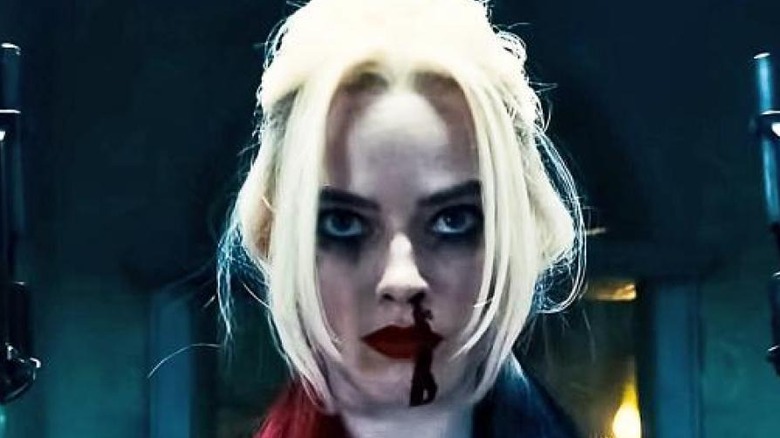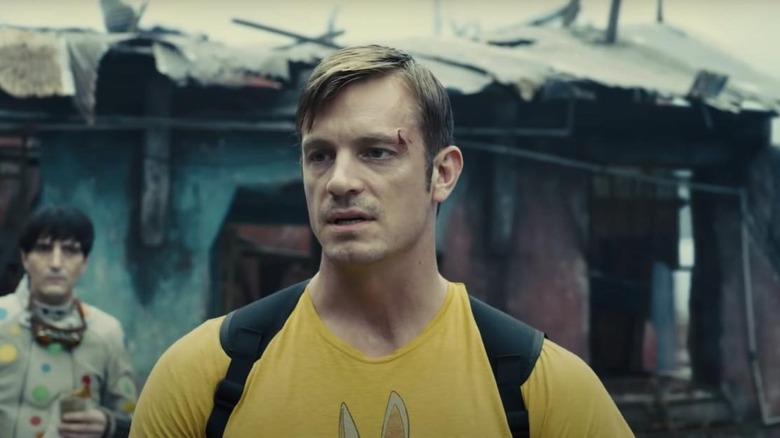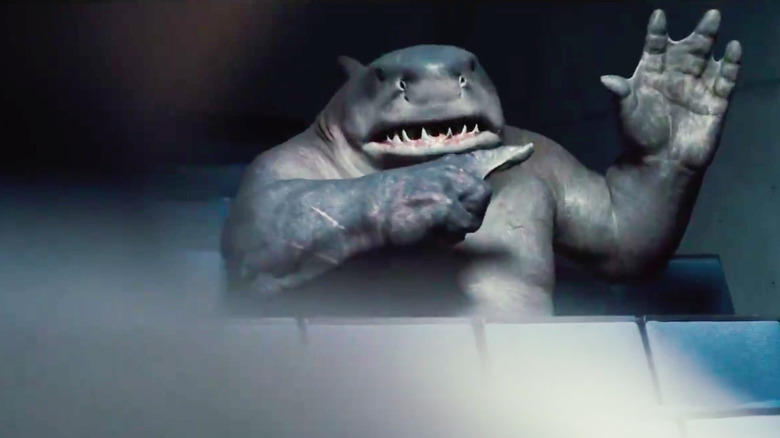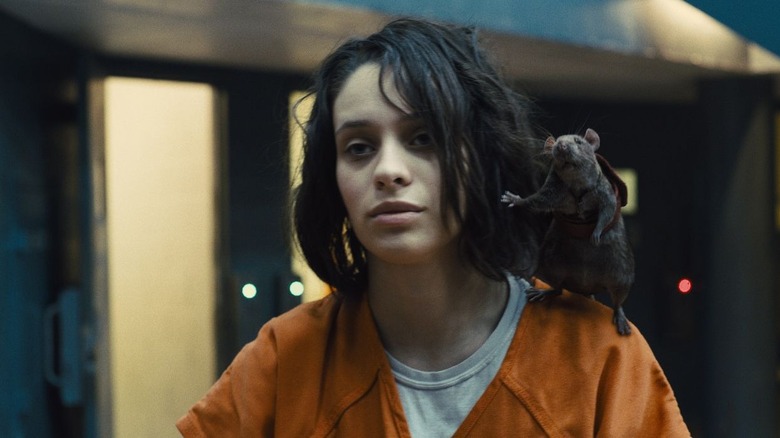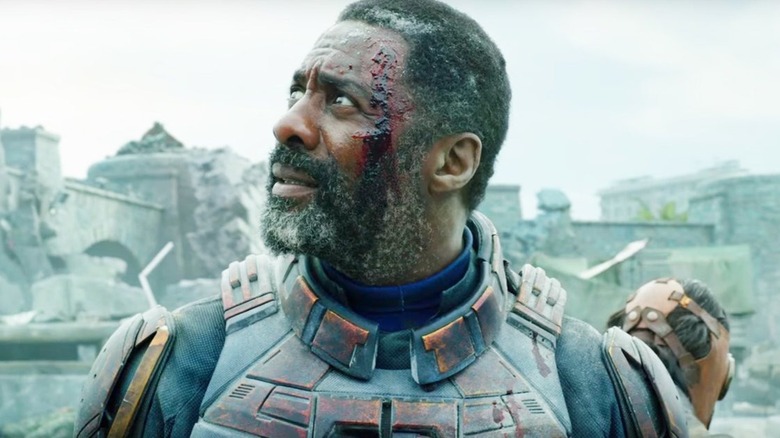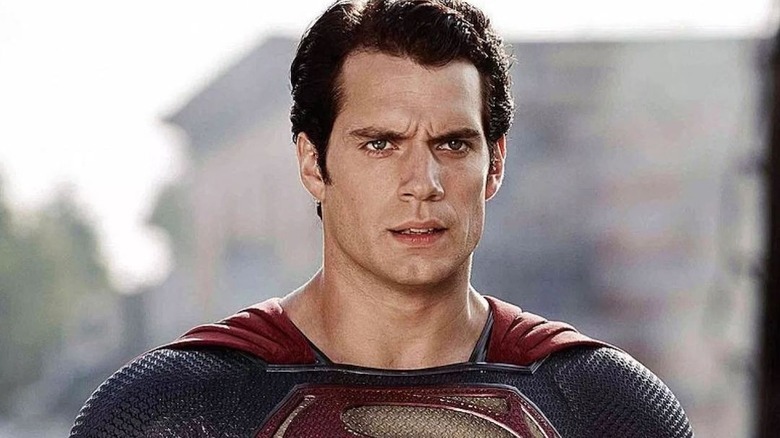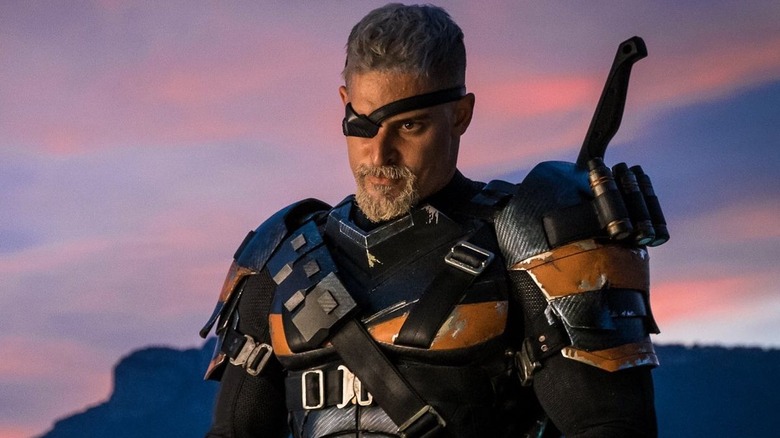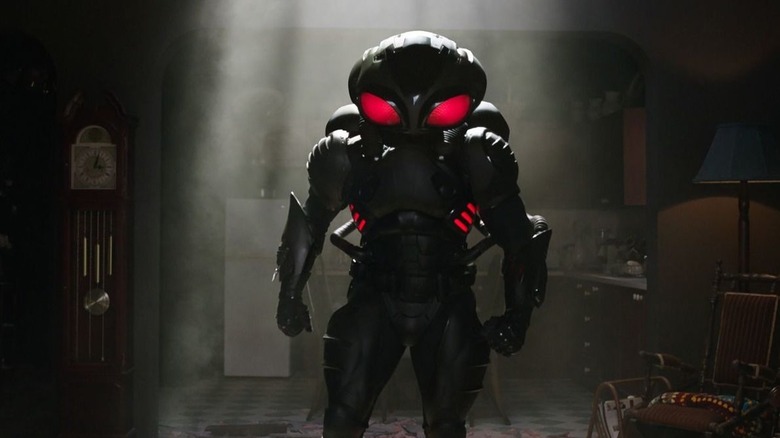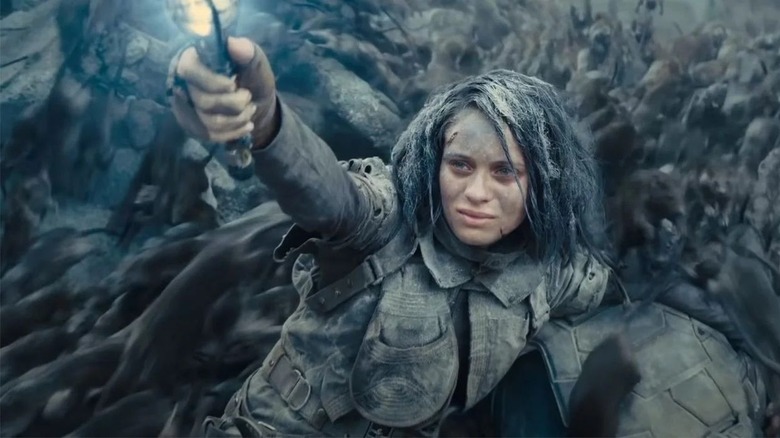The Suicide Squad Scenes You Didn't Get To See
Writer-director James Gunn's "The Suicide Squad" managed to pack a lot into its 132-minute runtime. The film's opening montage alone features more villains than some entire superhero films. Each scene to follow maintains that attitude, stuffed to the gills with dark gags, brutal violence, and familiar figures from the DC Comics mythology. By the time the film ends, any viewer would be forgiven for imagining that Gunn just threw in everything he could imagine and the kitchen sink.
Of course, like most movies, "The Suicide Squad" actually left many scenes on the cutting room floor, with Gunn estimating to Collider that roughly 30 minutes of scenes were cut. Some of these were concepts deleted early in production due to the complexity of cracking the movie's story. Others were elaborate fight scenes that were personal to Gunn's heart but still had to get the axe for pacing reasons. It can be bittersweet to get a glimpse of what could have been, particularly when it comes to scenes that were actually filmed but not included.
However, examining these deleted scenes can also help us appreciate how well-paced, not to mention stuffed with excitement, the final cut of "The Suicide Squad" ultimately was.
Why Amanda Waller hates Rick Flag
As "The Suicide Squad" begins, Rick Flag is not paired up with his eventual co-stars like Bloodsport and Ratcatcher 2. Instead, he's stuck with a squadron of supervillains that Amanda Waller has sent in as cannon fodder to distract enemy forces. In the theatrical cut, the viewer assumes Flag has been assigned to this doomed unit simply due to Waller's cold attitude toward human (and metahuman) life. But originally, a now-deleted scene was meant to add extra context to Flag's presence on this team.
"One thing we had to cut from the film that sometimes I'm like, 'Oh, I wish we didn't!' is that we find out why Rick Flag is in that group," Gunn explained to the Script Apart podcast. "We see a flashback where Rick Flag makes fun of Amanda Waller's shirt. It's this really ugly shirt with all these different colors on it, and he says, 'It looks like a group of clowns sh*t all over you.' And Steve Agee's character, John Economos, is just laughing hysterically at Amanda Waller, and you can just see death in Viola Davis' face. She just looks like death. And that's why [Flag is] on that beach." Considering the successful track record of jokes in "The Suicide Squad," an extra-dark gag like this would've been more than welcome, though Flag's presence on the initial Suicide Squad roster still works in the final cut.
A King Shark montage
While Bloodsport and the rest of the Suicide Squad take a bus ride to a bar The Thinker frequents, most of these supervillains are lost in their thoughts ... but not King Shark. He's staring out the window, enamored with the denizens of Corto Maltese, including a young couple smooching in an alleyway. King Shark's captivation by these sights of everyday people connecting makes it apparent that this toothy fellow with "no friends" isn't just a dimwit with muscles. There's sorrow within this beast, fueled by a burning desire to be connected to other people.
Originally, though, this quiet, poignant moment was not the only indicator of King Shark's internal desires. James Gunn initially had plans to build on this moment and further explore the character's loneliness. "You realize in that moment, hopefully just how he's not a part of this world and how he longs to be a part of this world," Gunn said, explaining the moment's significance to Collider. "That actually was a much longer sort of montage. That is really beautiful, and I really like in and of itself. Again, it was at the wrong place in the movie."
An action sequence highlighting Ratcatcher 2 and Polka Dot Man
Throughout "The Suicide Squad," audiences aren't left wanting when it comes to action beats involving characters like Ratcatcher 2 or Polka Dot Man. These obscure figures from the comics get several opportunities to establish themselves as memorable to the general public. At one point, though, there were plans to feature these two fan-favorite characters in another extended action sequence. This scene would've also featured characters like The Thinker and King Shark, and it even made it far enough to be filmed.
"There's a whole section with Ratcatcher and King Shark and Polka-Dot Man and Thinker that I cut, that was pretty dynamite stuff," Gunn recounted to Collider. "The hardest thing was some of Peter Capaldi and David Dastmalchian's best acting together, but it just was the wrong ... We take our time a lot in the movie, and I'm proud of that, but it was taking our time at the wrong point in the film. So it was a good cut. It hurts. But that's how movie making is."
As for where this scene originally takes place in the story, Gunn explained that this skirmish happens "right after they're outside of the bar ... when Rick Flagg and them are in the armored vehicle." Though this scene was left on the cutting room floor, at least moviegoers aren't entirely deprived of action moments from Ratcatcher 2 and Polka Dot Man in the final cut of "The Suicide Squad."
A mysterious ultra-gory moment
"The Suicide Squad" makes no bones about being an extremely graphic, R-rated affair right from its opening scene, which depicts the gruesome slaughter of several D-grade DC Comics villains. All that carnage sets the stage for an ensuing film so cartoonishly violent that one must wonder if "The Suicide Squad" was ever in danger of scoring an NC-17 rating. According to Gunn, there wasn't much concern over that ... save for one particularly nasty moment that ended up getting trimmed.
"I think we got by at an R-rating on their first pass-through," Gunn recalled to Collider. "There was one thing that I cut out earlier, with one of the characters that was really gory. I was like, 'You know what? It's just a little too much.' But again, we might see it someday in some form." Gunn did not indicate what this "really gory" moment entailed, nor where it happened in the story, why he put it in the movie to begin with, or even which characters were involved. While the details of this butchery are left up to one's imagination, discussion of this deleted bit does suggest that the relentlessly violent "The Suicide Squad" had to make at least one concession to fit snugly into the R-rated box.
A showdown with Superman
What adversary should a pack of supervillains fight? What kind of foe could inspire a bunch of evildoers to work together? In the final cut of "The Suicide Squad," a series of contenders, ranging from Corto Maltese generals to the alien Starro the Conqueror, serve as opponents for Bloodsport and company. But there was once an iteration of Gunn's "The Suicide Squad" that saw these morally troubled characters confronting not another DC Comics baddie, but one of the most iconic superheroes of all time: Superman.
"There was a time when I thought The Suicide Squad should fight Superman," Gunn revealed in an interview with Script Apart, adding that his reasoning for not picking Superman was that "At the time, there were a lot of questions like, 'Who is Superman in the DCEU? Is this movie outside the DCEU?' and I just didn't want to deal with it all that much. I just wanted to tell a good story." Instead of Superman, Gunn went with a personal favorite character, Starro the Conqueror, as the principal antagonist.
"He's a character I love from the comics," Gunn explained. "I think he's a perfect comic book character because he's absolutely ludicrous but also very scary in his own way." Interestingly, a variation of the Superman-vs.-Suicide Squad idea made its way into the unrelated Rocksteady video game "Suicide Squad: Kill the Justice League."
Deathstroke as a Suicide Squad member
Shortly before the release of "The Suicide Squad," James Gunn took to Twitter to reveal an assortment of DC Comics baddies that he attempted to put into the film but couldn't find a space for. Among those listed was Deathstroke, a dark character who was previously played by Joe Manganiello in "Justice League." While most of these characters were revealed with no context as to how they would have factored into "The Suicide Squad," a behind-the-scenes featurette shed some light on Deathstroke's potential role.
Per Comic Book Resources, in the featurette "The Suicide Squad: The Way of the Gunn," the director speaks to a room of artists with various pieces of concept art stapled to the wall behind him. Among this collection of images is one depicting Deathstroke at the head of the Suicide Squad, leading King Shark, Peacemaker, Polka Dot Man, and Ratcatcher 2 out of the water and onto a beach — a shot reminiscent of an image from the final film.
Gunn has been open about the fact that the position of Suicide Squad frontman was written for Idris Elba first and foremost: In the early stages, the director didn't even know which figure from the comics he would assign to Elba's written role. The concept art indicates that for at least a while, Deathstroke was a potentially prominent player in "The Suicide Squad" as a candidate for the Elba appearance that would eventually take the form of Bloodsport.
A Black Manta appearance
Though James Gunn has been clear about how "The Suicide Squad" does take place within the broader DC Extended Universe, we don't see any appearances from DCEU characters who were established outside the original "Suicide Squad." No cameos from Ben Affleck's Batman or Ezra Miller's The Flash are to be found here. However, one previously established character considered for an appearance was Black Manta, who was portrayed by Yahya Abdul-Mateen II in "Aquaman."
"The Suicide Squad" would've been a logical place for Black Manta to return, given the character's connection to the Suicide Squad group in the comics and other media, such as the direct-to-video animated movie "Suicide Squad: Hell to Pay."
However, any scenes involving Abdul-Mateen II's version of Black Manta in "The Suicide Squad" didn't get far into the production. On Twitter, Gunn revealed that while he "considered Black Manta — [Abdul-Mateen II] is a great guy and great actor — but his power set wasn't helpful to my story." Placing the importance of storytelling above cinematic universe connections, or even a desire to work with a talented performer like Abdul-Mateen II, speaks to the kind of sharp, discerning writing that made the final cut of "The Suicide Squad" so much fun to watch.
An alternate death for the climax
The finale of "The Suicide Squad" features plenty of cathartic moments, like Harley Quinn finally figuring out what she should do with the javelin she's been carrying around and Ratcatcher 2 channeling the spirit of her father to summon an army of helpful rodents. But it's not all triumph and exciting action. There's also a crushing moment meant to reinforce the gravity of the movie's villain when Polka Dot Man gets squished by Starro just moments after he finally feels like a superhero for the first time. Interestingly, Polka Dot Man was not always meant to be the Suicide Squad member who would perish due to the might of Starro.
"The original ending that I pitched, one main character died and one main character did not die," Gunn explained to Variety. "And the main character who died was Ratcatcher 2. She was so sweet, I just felt like it was just too dark. Not that we don't love Polka Dot Man. We do. I just couldn't [kill Ratcatcher 2]. So I relented." Given that Ratcatcher 2 has become such a fan-favorite character since "The Suicide Squad" debuted, it's likely Gunn made the right call by sparing her a grisly demise. On the other hand, fans of Polka Dot Man may be frustrated to learn that there was originally a version of "The Suicide Squad" in which he survived to the end credits.
